
Guide
Painting on the train? With a few tricks you can be relaxed and creative
by Stefanie Lechthaler
"How do all those little hairs actually get into the brush?" With this question in mind, I set off for Ebnat-Kappel to the PEKA brush factory to "help out" in production.
The last Swiss brush manufacturer has just 27 employees. This is also reflected in the background noise. Silence reigns at PEKA. Only a few voices can be heard, as if through frosted glass. At the same time, coffee drips from the vending machine into cardboard cups. The atmosphere is relaxing. This changes abruptly when you enter the production hall: quiet conversations are replaced by noisy machines. All the employees are engrossed in their own work.
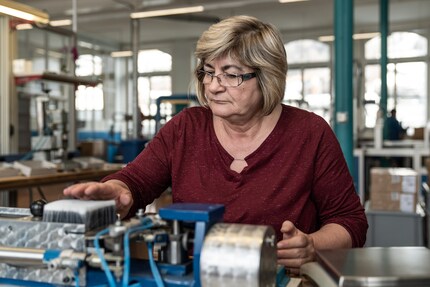
This focus and sensitivity are essential, despite a lot of machine support. I will soon be a negative example of this. But first it's the professional's turn. Ilona sits on an office chair and takes care of the bristles for the subsequent brush. Today it's the AQUAsynt UniPro - a curved flat brush that works well in corners. The bristles are made of synthetic material. For a long time a no-go for professionals. "For a long time, the technology was not so advanced that synthetic brushes could keep up with those made of human hair. They absorbed less colour and released it much more quickly," explains Jürg Nüssli, Head of Corporate and Strategy Development at PEKA. Today, the difference is hardly recognisable with good quality, although many painters still prefer brushes with natural fill materials, especially Chinese pig bristles.
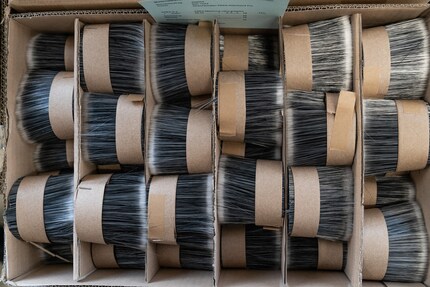
The Aquasynt series is one of those that is now also accepted by professionals. After Ilona has smoked outside to combat her burgeoning nervousness, she is now ready to show off her craft. Step one: the hair has to go into the metal frame. It always has to be exactly ten grams. The portioning is done using a pedal on the floor, then it's time for manual labour. She grips the bristles with her left hand and the frame with her right. The two are connected within seconds. At most one or two hairs are missed. It soon becomes clear that this is down to Ilona's dexterity and not the simplicity of her work when I carry out the same step. I would cost the company a lot of money: hair everywhere but in the metal frame and it takes me five times as long. Nevertheless, Ilona constantly encourages me and shows the patience of a saint. "You're doing really well for a start."
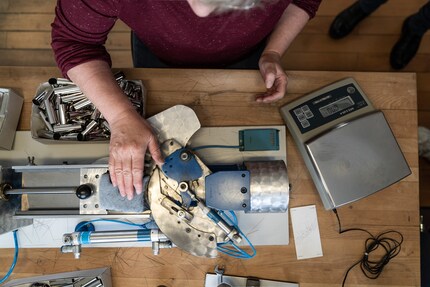
The CEO and brother of Jürg, Christian Nüssli, would probably be a little more critical of an employee like me. The two are joint owners of PEKA and are wholeheartedly involved. "Our father was the second apprentice ever here. He worked his way up to Managing Director at the age of 35. The buyout followed when he was 70," says Jürg. Today, the company produces a total of 250 different items and, with the help of machines, produces an average of 900 brushes a day. Most of these remain in Switzerland. Exports are mainly customised products or deliveries to expatriate painters.
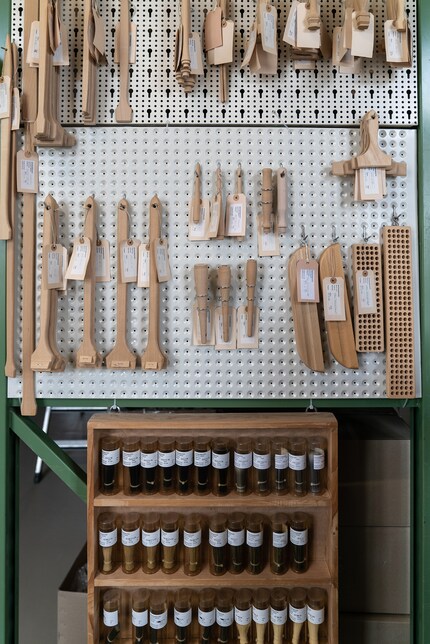
One person who has witnessed all this change is Roland. He is the last Swiss brush maker to have learnt the trade as a complete craft. The changeover was never a problem for him. "Of course, the work is completely different today. I enable machines to carry out the work I have learnt. But I'm a tinkerer and love working on the machines and repairing them." He has enough to do. Hardly a day goes by when he doesn't have to make some kind of optimisation because a part is acting up somewhere in the process.
Everything runs smoothly for Ilona. Meanwhile, she explains step two of her job. "The frame with the bristles has to be pressed so that everything holds." Calmly and yet incredibly quickly, she uses a template to cut the hair to the right length and then operates the small press by hand. And that's it. The bristles are ready for the next step, the cementing. The frame is filled with two-component glue and then left to dry for 24 to 48 hours before the half brushes are sent to Roland. The bristles are attached to the handles by him and his finicky machines. Incidentally, PEKA does not produce these itself, but has them manufactured in other European countries.
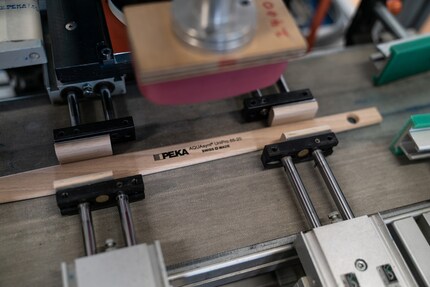
Then the brushes are stamped. Everyone should know that they are made in Switzerland. A mark of quality. Before each brush is shrink-wrapped, the crease is still missing. This is done by machine. The metal frame is folded exactly at the transition between the handle and the putty. The curved flat brush is finished, and so am I. My head is pounding from the noise of the machine, my fingers are cramped from the fine motorised work. Ilona continues to sit in her office chair, focussed and content. She still has half a day ahead of her. The 900 brushes will probably be tight today.
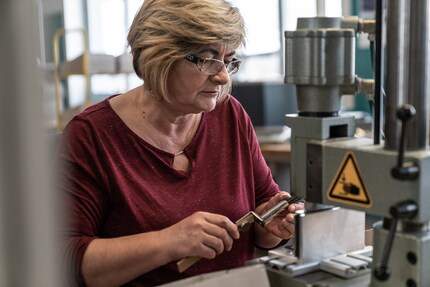
My life in a nutshell? On a quest to broaden my horizon. I love discovering and learning new skills and I see a chance to experience something new in everything – be it travelling, reading, cooking, movies or DIY.
Interesting facts about products, behind-the-scenes looks at manufacturers and deep-dives on interesting people.
Show all